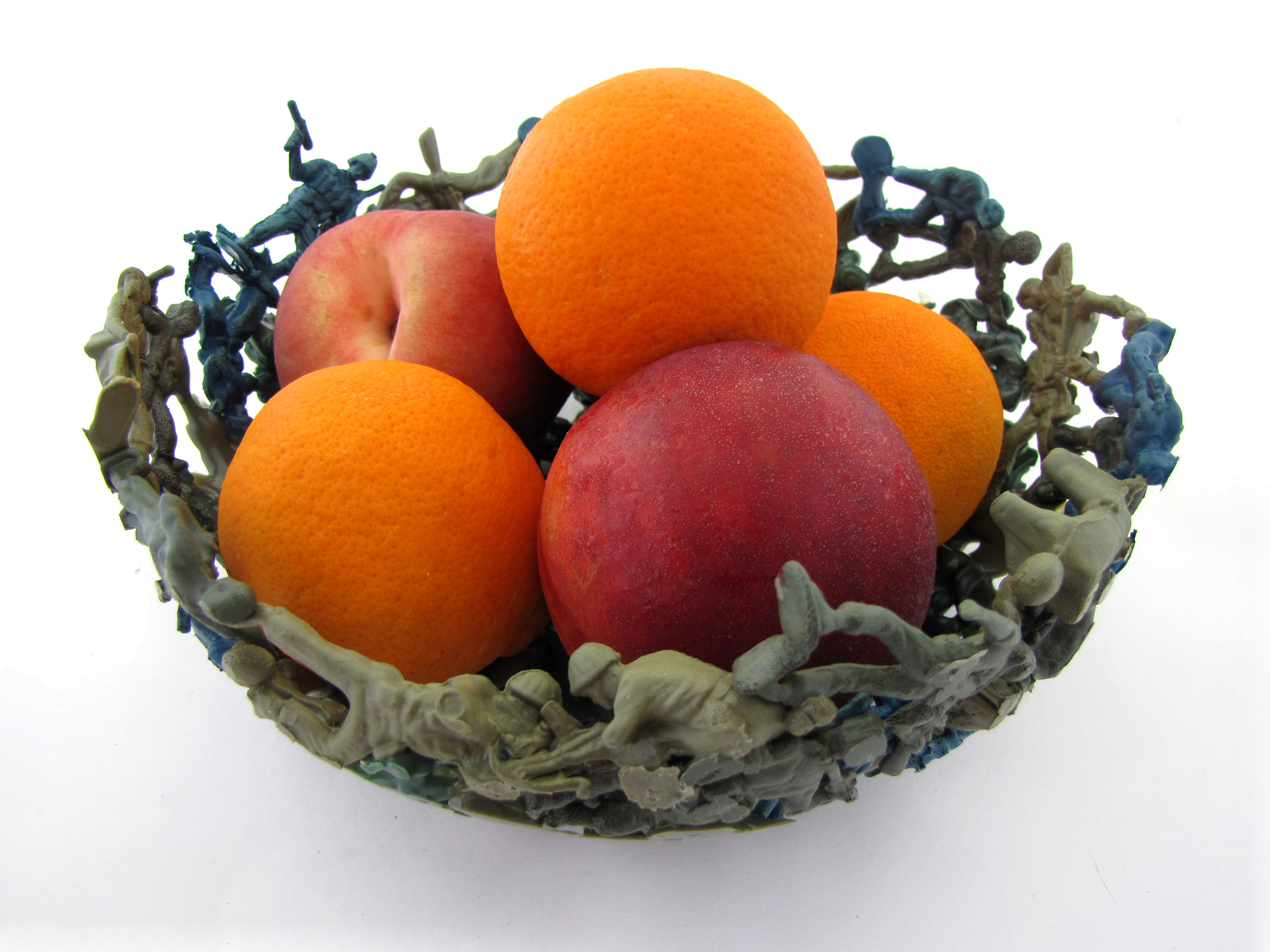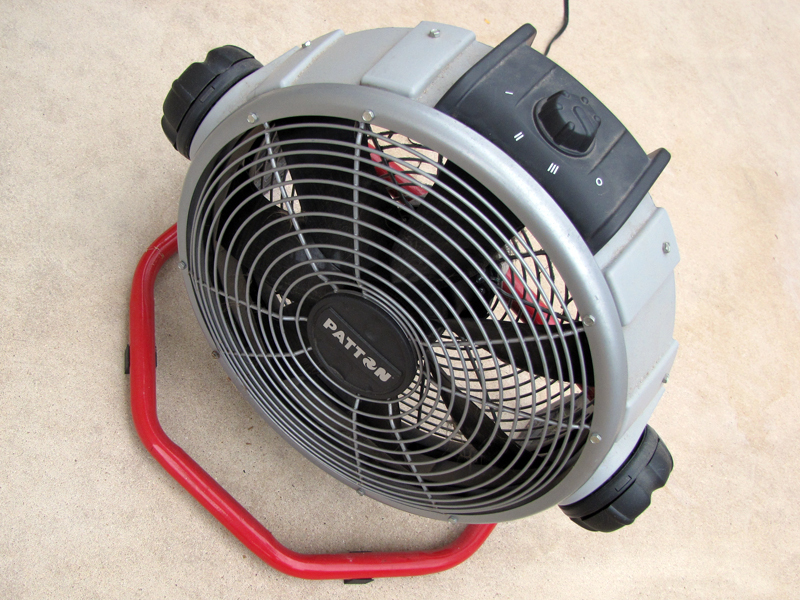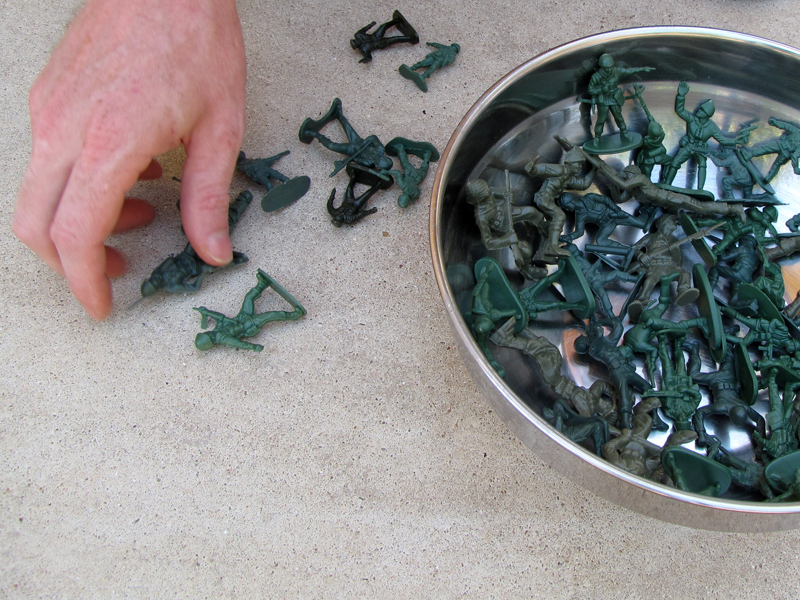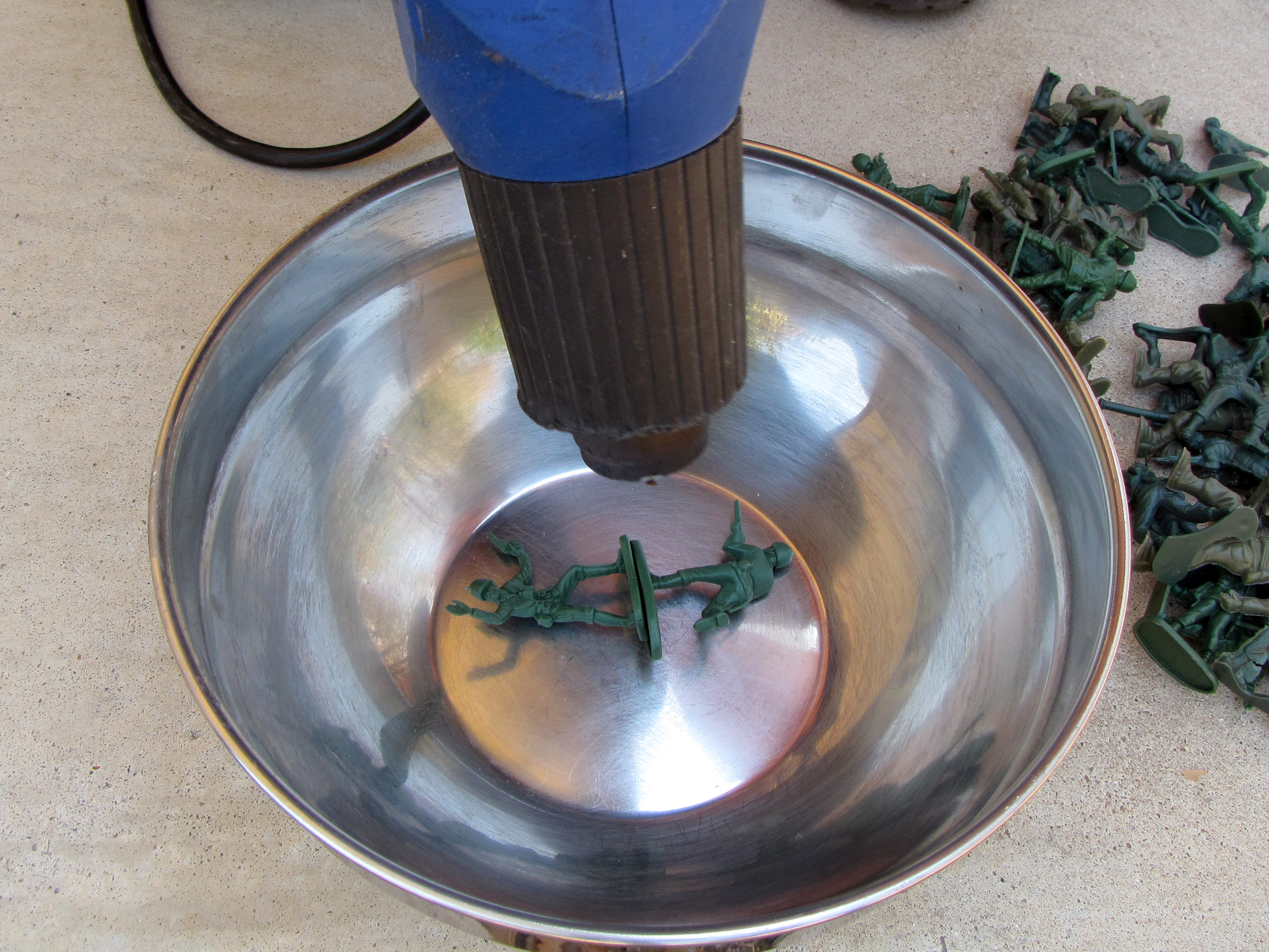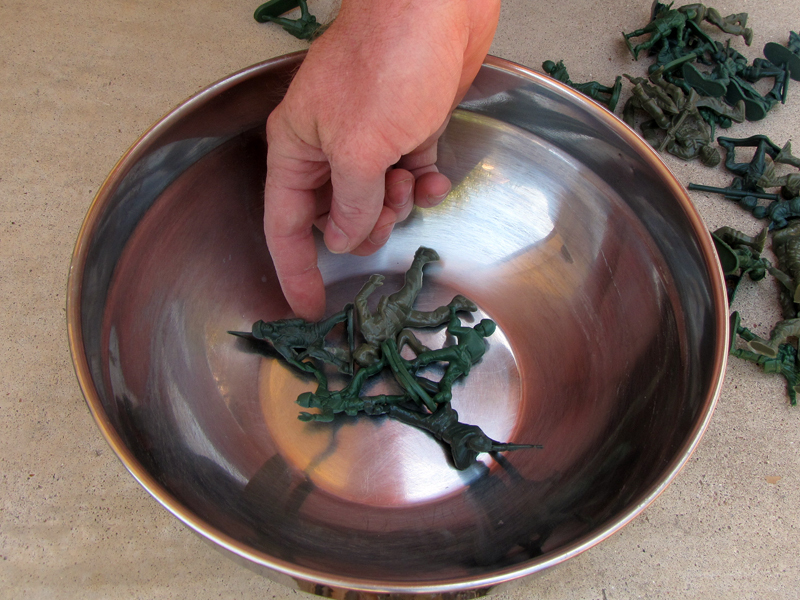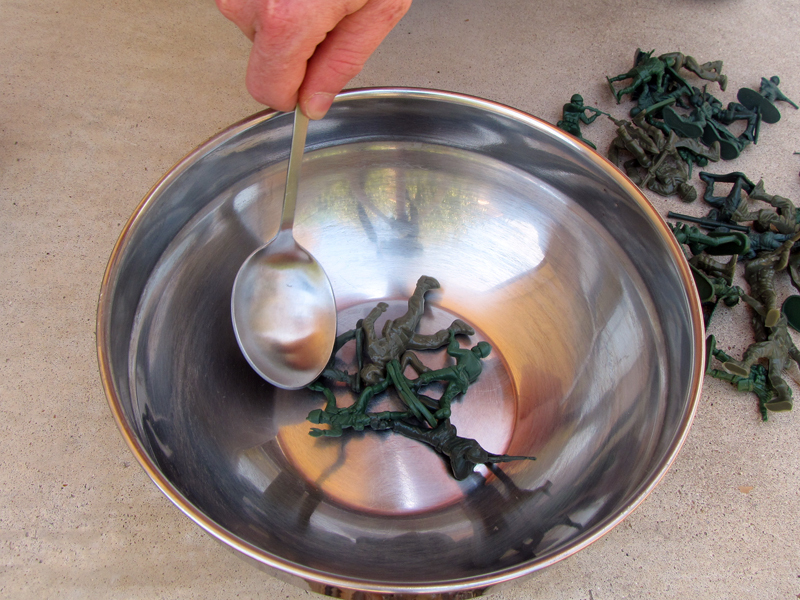This is a fairly well-known stunt, especially since Mark blogged the work of Dominic Wilcox on Boing Boing back in 2004. The methods circulating on the web generally favor the use of an oven to melt the guys together, and while that’s certainly less labor-intensive, it generates a bunch of foul-smelling fumes in your kitchen. The oven method applies indiscriminate heat, which tends to melt the guys pretty severely, and is also, reportedly, fairly sensitive to differences in composition between guys from different manufacturers.
I’ve always wanted to try this, and since it’s plastics month, I thought I’d try to figure out a way to do it outside. This method uses a heat gun to soften the plastic in a more discriminate way, and though it’s more work, it can result in a less-melty look, with more intact guys. Adding a mechanical “mushing” action to the weld also seems to make the process more tolerant of different types of plastic from different batches of guys.


